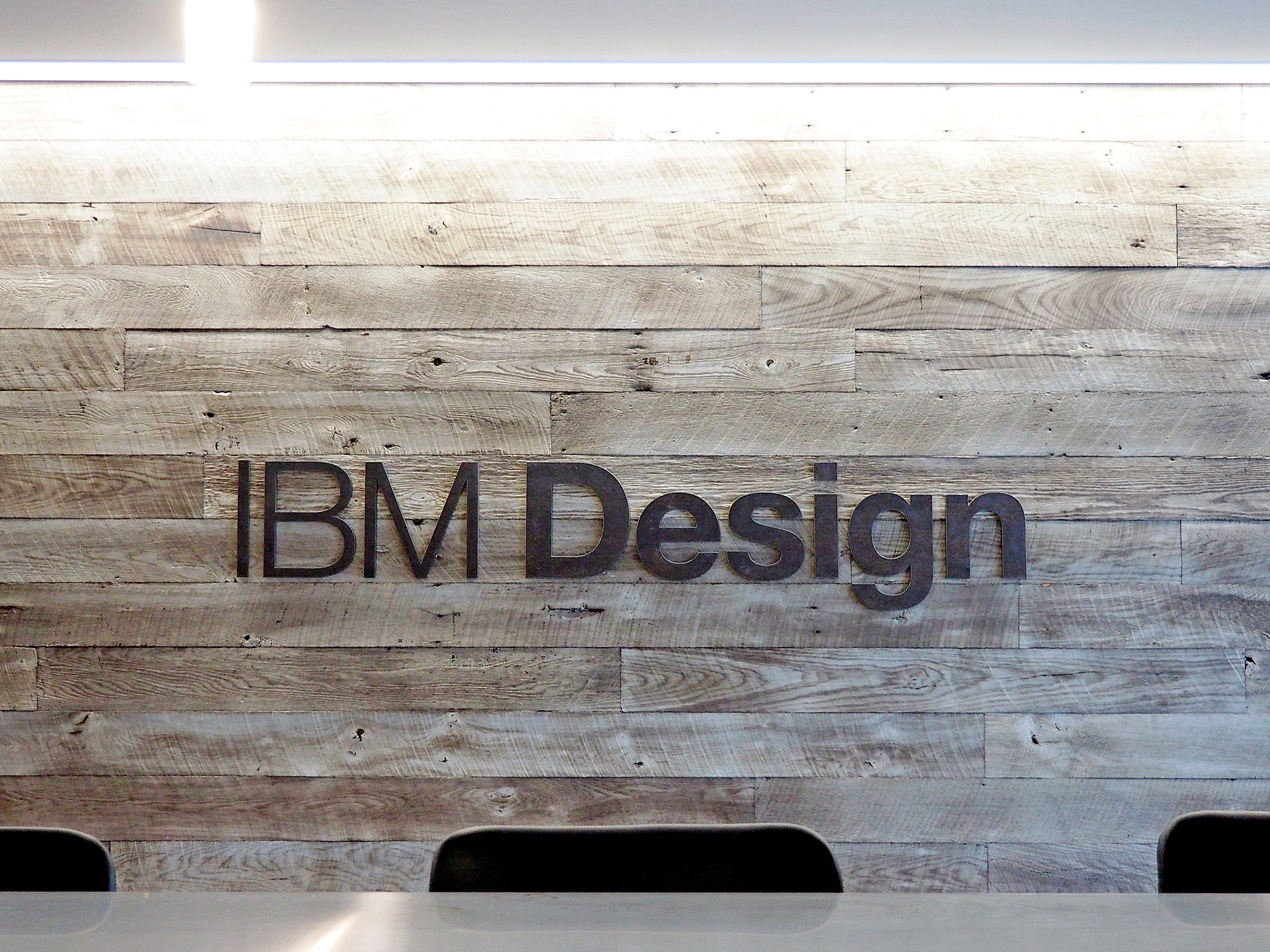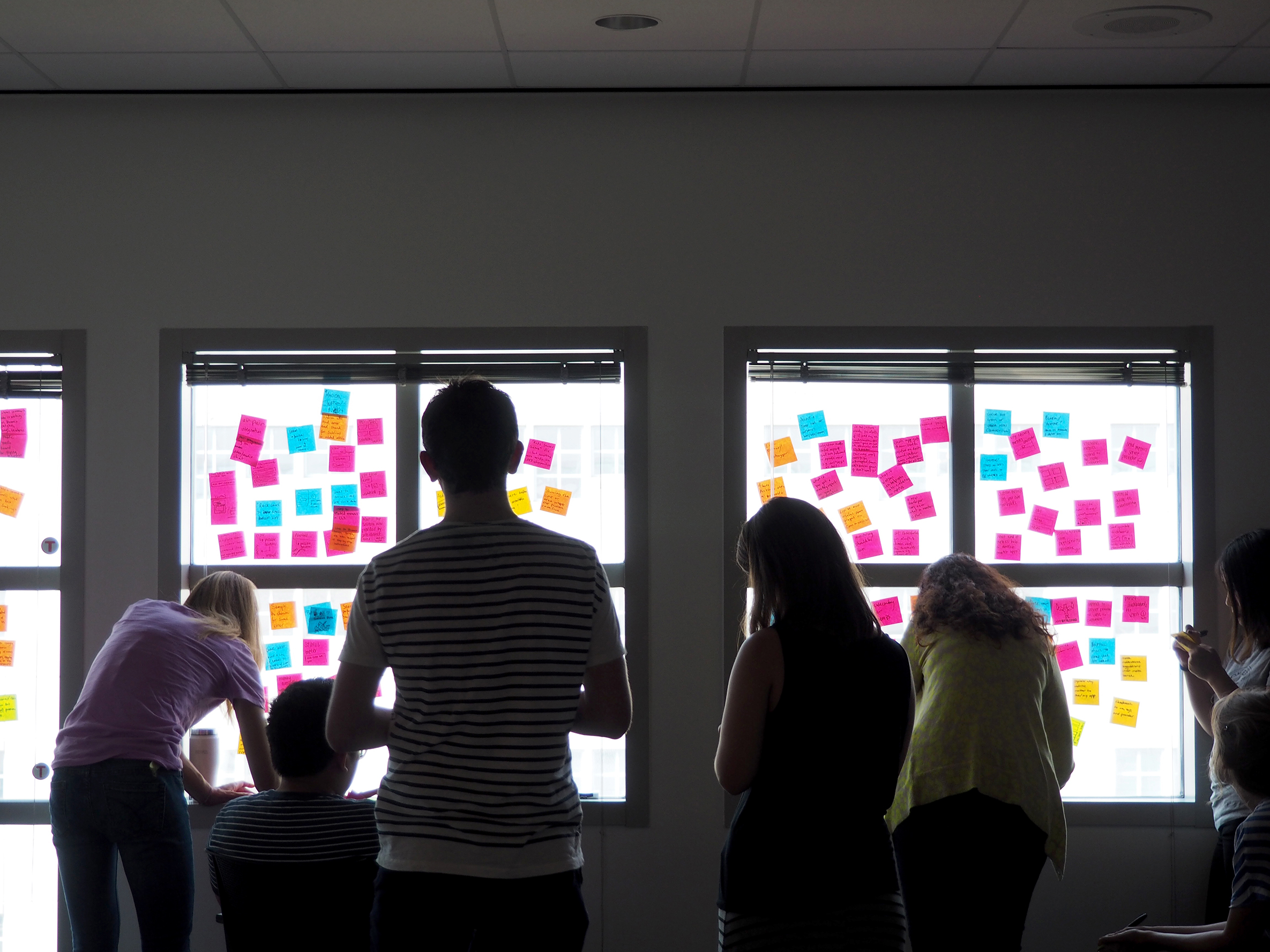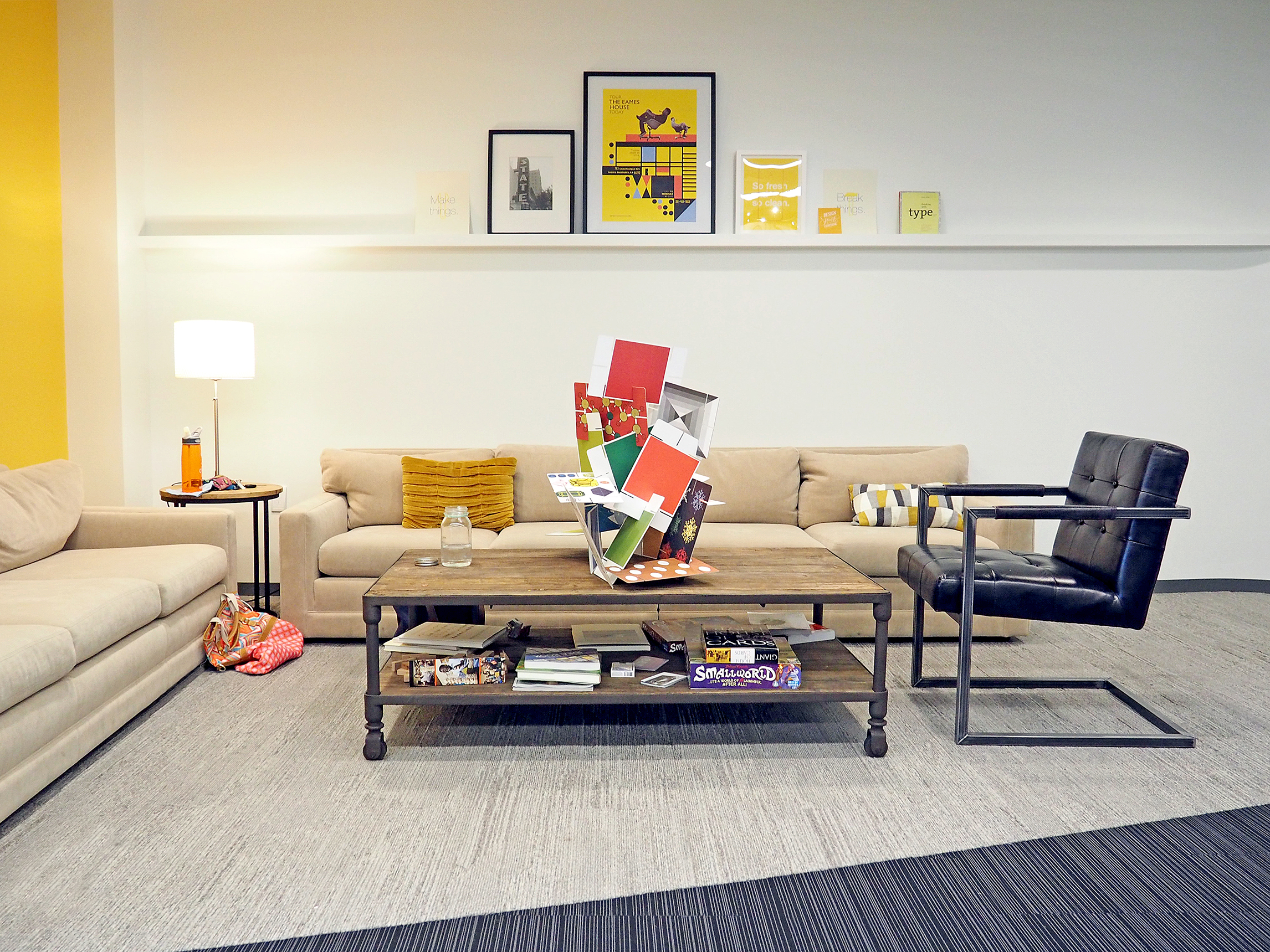Austin, Texas — home to finger lickin’ BBQ, killer mosquitoes, sweaty summers, and IBM Design. It is here in Austin that I find myself among 70+ design graduates from around the world — from prestigious schools such as SVA New York, to less familiar centres of excellence such as Plymouth University UK — each of us bug-eyed and eager to learn about “designing the IBM way” at their newly opened, state of the art studio.
It was with open arms and an endless supply of Sharpies and Post-Its that we were welcomed into IBM Design Bootcamp at the beginning of July for what would soon prove to be a rollercoaster journey of design challenges and creative problem solving. The first few weeks were a total blur. Each day we gathered together for a meet and greet over breakfast tacos and kolaches. We attended intense workshops to learn about IBM and our new roles in this colossal company of 400,000+ employees. We spent time familiarising ourselves with new faces, unusual accents and foreign cultures, and of course, we battled with the Texas heat. For me — a shy (and often cynical) Irish cailin — it was a lot to digest and for a brief period I felt completely overwhelmed and anxious in my new surroundings. When I signed up for this gig I didn’t know what to expect. Truthfully (and aside from my personal conflicts with the weather and food), I was quite apprehensive about my start at IBM Design. I really struggled to imagine how IBM would succeed at the mammoth task of onboarding so many designers and convincing us that design thinking is the best practice for implementing change and instilling design values within enterprise. With a very basic understanding of design thinking, I was also a little suspicious and very much curious to find out how effective this method of design practice really is. With all of these personal and professional reservations, questions and adjustments I thought… “What have I gotten myself into and what the hell are *kolaches?!”

Design Bootcamp
For the three months of “bootcamp” we will work in interdisciplinary teams ideating and designing solutions for new and existing IBM software products. The curriculum is closely modelled on the principles of Design Thinking practiced at Stanford’s famous d.school. We have learned quickly that by implementing the thinking and strategy of the d.school, IBM’s global design team hope to deliver cutting-edge, reliable, and sustainable software products and services to their customers.
The projects assigned to us are extremely demanding and at times, due to their complexity and scale, they can — for any novice designer — seem almost impenetrable. We sketch, we write, we talk, we make. There is a constant energy throughout the studio and a constant flow of coffee to sustain us. Tensions can be high and deadlines are tight. We fail, we fail fast and we try again.
The teams are composed of visual designers, UX designers, front-end developers and design researchers. Everyone has their own understanding of design, their own unique skill set, and as I quickly came to appreciate their own opinions about typefaces, interfaces, and code languages. We lean on and learn from each other but most importantly we learn how to listen. Throughout each project we immerse ourselves in IBM’s Design principles as we seek to become expert storytellers, coders and visualisers. Or as we are constantly reminded that we are here at Design Bootcamp to become IBM’s next generation of digital and strategic designers. There is a ton of information to soak up and the experience is challenging but the opportunities and potential — both on a personal and professional level — are second to none. My initial apprehension lessens and I’m now thinking “Wow, how lucky am I to be here…”

Why IBM Design
Recognising the inherent value of design, IBM is investing heavily to transform itself from a technology led corporation to a design led one — a mighty feat for any company of this scale. Traditionally known for their hardware products, there has been a recent and powerful shift in IBM’s business objective. IBMers are now conceiving, designing and developing innovative and useful solutions within the digital realm in an effort to create a smarter planet. There is an increased hunger among us all for streamlined, immediate, and easy to use web applications, and IBM is making commendable steps forward to deploy the most effective software products into the hands of you and I — competing on the same stage as Google, Microsoft and Apple. Built internally and from the ground up, IBM Design is reimagining the possibilities and potential of design within enterprise to meet the expectations of their customers.
Exercising IBM Design Thinking, IBM Design advocates cross-pollination between each department and discipline within the company to ensure that every person involved has a rich understanding of the product, the user, and each other. This is the foundation of IBM Design — even the physical studio space has movable walls and furniture to allow flexibility between each multi-disciplinary team. Transparency and communication between everyone is key and we are constantly sharing ideas and critiquing work — measuring our progress against IBM Design values at every step.
As my group and I begin to dig deep into each project assignment I realise how important my role as a designer is. Over the course of a single day I find myself delving into research, user experience, visual design, and programming. Every creative decision made is informed by our understanding of the audience and the domain that we are designing for — no assumptions are made during the process and we are continually iterating and refining our outcomes. Surrounded by people who are absorbed in and stimulated by design, I begin to understand the true value of design thinking and how adopting these principles can have a real impact both internally and externally, and why this shift in IBM’s practice is so significant.
The company has a deep connection with design and as I walk around the 7th and 8th floor of the Austin building I’m reminded of this. On every turn I’m greeted with Paul Rand’s famous rebus of the IBM logo and after a busy day on my feet there’s nothing better than kicking back into the most luxurious Eames lounge chair (although I’m pretty sure they’re for VIP bottoms only…). Embedded in its history, IBM is now eager to leverage design from within the company instead of outsourcing it as they have done in the past.

Graduate Opportunities
I graduated from IADT, Dun Laoghaire in 2013 where I studied Design in Visual Communications. Throughout the course our lecturers stressed the importance of “the idea”. Our work was never solely about aesthetics, form followed function and content was king. We were taught to always question everything we created — “Do it again” became our daily mantra as we were tutored to trust our own processes and decision making. I learned at IADT that visual design can be much more powerful and exciting when it supports a great idea and so to learn that IBM Design employs this very same ethos was both surprising and heartening. Out here in Austin there are 11 Irish designers attending Design Bootcamp — 10 of whom graduated from IADT within the last year. Joining a major corporation may not be the obvious path for design graduates (I for one wasn’t overly enthusiastic about working for “the man”), however, having witnessed this new movement within IBM I expect that our collective assumptions will soon change. Students are now leaving college with oodles of skills and experience in various disciplines and as more and more Fortune 500 companies acknowledge the potential of design there will be greater opportunities and more unusual paths for graduates to take. With the recent announcement of Apple and IBM’s partnership — who will work together to improve the way businesses operate by designing better enterprise mobility — the future seems bright for any designer hoping to work in this domain.
Designers often fear that successful design can only exist within or be produced by boutique studios and agencies. As voiced throughout this article, I was skeptical when I first considered joining IBM. After graduation I worked at Atelier with David Smith & Oran Day, and also at Science Gallery Dublin designing for print and screen at a very small scale. I loved the intimate environment and the type of work executed in both studios. IBM, in my mind, made ATM machines and typewriters so it was difficult to figure out what my role would be when weighing it against my most recent experiences in the professional design world. Then someone’s name came to mind — Sue Murphy. Sue is an Art Director on the IBM account at Ogilvy and Mather, NYC (she is also a fellow IADT graduate and a panel member of 100Archive so who better to get in touch with than Sue!). Looking through her work I quickly realised that my perception of IBM was far from accurate. Although the type of work that Sue creates is much different to the projects undertaken at bootcamp, there is clear evidence of the potential for Communication Designers working in this space. The playful and inventive nature of her team’s work is inspiring. I now know that IBM is truly recognising the value of design and making real changes to ensure that creative thinking, precision and style is integral to their products and services. Here in the Austin “Design HQ” there is a genuine commitment and appetite for experimentation and an openness to out-of-the-box thinking. For young designers and upcoming graduates, these opportunities and experiences are invaluable.
Final Thoughts
Each day I am surrounded by passionate, smart thinkers who simply want to make a change in the world, through design. My experience so far here at Design Bootcamp has, without question, broadened my perception of design, its value and potential, and I hope that my enthusiasm will continue to grow as I settle into my new role. Still in its infancy, IBM Design is a start up and has a long road ahead. It will be tough for everyone involved, no doubt, but I feel privileged to be part of this global team as their journey begins. This is an experiment — it is an attempt to change the future of design in enterprise, technology, and social innovation, and for this IBM newbie, well, it’s pretty damn exciting.
*A Kolache is a super soft, fluffy pastry with a sweet or savoury filling. Very popular here in Texas.
